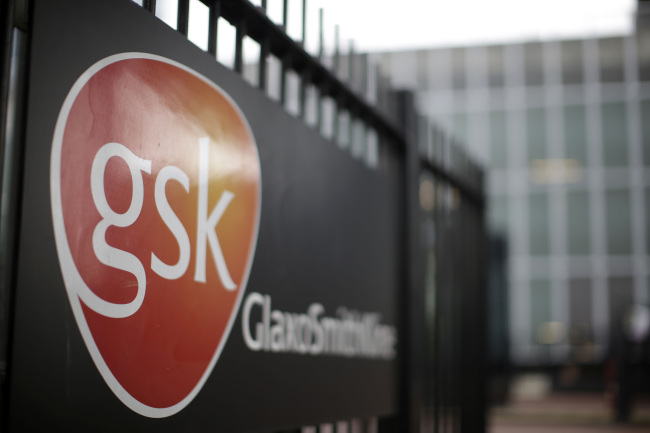NEW YORK (AP) ― Drugmakers eager to satisfy shareholders by boosting profits and share prices are wheeling, dealing and in one case even making trades like a pro sports team looking to shake up its roster. The moves could spur more mergers and acquisitions in the industry.
Swiss drugmaker Novartis AG on Tuesday said it’s trading its vaccine business for GlaxoSmithKline Plc’s cancer drug business and selling its veterinary drug business to Eli Lilly and Co. Meanwhile, Canadian drugmaker Valeant Pharmaceuticals International Inc. said it teamed up with activist investor Bill Ackman in a bid for Botox maker Allergan that could be worth about $45 billion.
Amid easier financing and low interest rates, four smaller drugmakers also have announced bids of $3 billion or more to acquire competitors since January, according to data and research firm The Mergermarket Group. The biggest is a $23 billion bid by Forest Laboratories Inc. for Actavis Inc.
 |
GlaxoSmithKline’s headquarters in London ( Bloomberg) |
The deals partly reflect a push by the pharmaceutical industry to boost sales and cut costs as drugmakers look for ways to return to the growth investors have come to expect after the bullish last two decades, when they continually churned out new blockbusters, drugs with annual sales of more than a billion dollars.
Most drugmakers have since seen revenue flatline or even dip as a tidal wave of cheaper generic competition to former blockbuster pills over the past few years wiped out billions of dollars in annual revenue. Others see the wave coming ― Novartis, for instance, it is awaiting generic competition to its blockbuster blood-pressure drug Diovan ― and are trying to lessen the impact.
At the same time, research to develop new medicines to replace lost income is ever more difficult and expensive. Mergers and acquisitions give them additional sources of revenue and new ways to cut costs and become more efficient while they wait for drugs in their research pipeline to win approval.
Most of the spurt of mergers and acquisitions are meant to narrow the drugmaker’s focus, a strategy that’s in vogue now, partly due to pressure from analysts and investors. The pharmaceutical industry tends to cycle back and forth every several years between periods where most companies are divesting to focus on their core areas, or diversifying by snapping up other types of drugs or related businesses.
“Wall Street has been rewarding more-focused companies” with higher share prices, said Les Funtleyder, a consulting partner at healthcare investing firm BlueCloud Healthcare. “You see one company doing something and others feel like they have to make a strategic response.”
Eric Gordon, an analyst and professor at the University of Michigan’s Ross School of Business, said the industry is rearranging, with companies reducing the number of diseases they’re attacking and divesting noncore businesses to others stronger in those fields.
“A few years ago, it would have been the opposite. They were acquiring things so they wouldn’t be so dependent on one area” or drug, Gordon said. Then “that doesn’t do the magic that’s expected of it, so we divest and get focused. In 2019, we’ll probably be conglomerating again.”
In the short run, analysts say the deals will boost drugmakers’ share prices and guarantee yet another round of layoffs in the industry. The layoffs, plus other synergies as the new assets are integrated, should boost profit margins in the midterm. Meanwhile, patients “waiting for a cure” won’t see benefits soon, but might eventually, Gordon said. That’s because rejiggered companies with strong scientific teams and commitment to a particular disease area could be less likely to scrap experimental drugs in that field when they run into some bumps during patient testing. On the other hand, the companies may decide to reduce the number of experimental drugs they push through increasingly expensive stages of patient testing.








